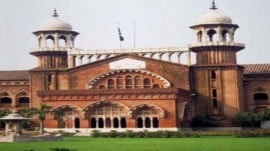
Acknowledging there is not a single improved water facility for Fata’s burgeoning population of more than 4.3 million (as of 2001-2012), its administration has adopted a rigorous plan to implement a drinking water policy - a first of its kind in the tribal areas.
Falling water level
According to the FATA Drinking Water Policy draft available with The Express Tribune, the main source of water for 84% of Fata’s population is groundwater, however, a drought that lasted some four to five years has depleted groundwater and the water table has receded by more than 200 feet.

In the more rugged, dry terrains of Mohmand and Khyber agencies, the decline is even deeper. With the water table falling to 500 feet, people have started storing rainwater for animals as well as domestic use, states the draft.
According to the document, the remaining 16% of Fata’s population uses surface water, while nearly 31.7% of the documented population does not have access to clean drinking water.
Terming water collection a gender-specific activity, the draft states mostly adult women go out to collect water. Of the families that have to fetch it from sources outside of their houses, 46.4% spend 30 minutes to an hour on average on the activity. In Mohmand and Khyber, women have to walk up to two kilometres to fetch the commodity.
Functional or not?
There are 1,621 drinking water supply schemes across the tribal belt and the public health engineering wing of Directorate Works and Services is responsible for their maintenance. But the document states there is no reliable database to “efficiently manage this vast inventory of assets.”
Although one-third of the sector’s current budget is spent on maintaining shoddy pipeline supply schemes constructed post-1995, the functional status of these is not accurately known.
“While it seems great on paper, practically there is hardly little done,” a senior official related to the water programme told The Express Tribune. “But identifying the problem is part of the solution; the water policy is a small but solid step ahead” he said.
Setting the path
According to the document, 10% of Fata’s Annual Development Programme funds will be allocated to the potable water sector and marginalised communities will be prioritised when new supply schemes are planned.
A WatSan (Water and Sanitation) Cell will be established which will serve as a focal institution for coordination, research, data repository and technical resources. “The WatSan Cell will coordinate among FATA Secretariat entities, relevant ministries of the federal government and the provincial government on water and sanitary interventions.”
In the initial stage, a mapping of the existing surface and groundwater resources based on the National Environment Policy and Pakistan Environmental Protection Act 1997 is also on the cards.
The operational and managerial responsibilities of water schemes will be handed over to organisations only after their track records are verified. “Corruption and nepotism is a major problem and an oversight body will be set up for all projects,” said the programme official.
On a legislative level, the policy will be reviewed every two years or more frequently by the Policy Review Committee which is yet to be formed.
The FATA Drinking Water Policy aims to streamline the sector and ensure the entire population of Fata has access to adequate quantity of safe drinking water at affordable cost through efficient services. The goal is supposed to be achieved by 2025, if the policy is implemented immediately. Once implemented, the guidelines of the National Drinking Water Quality Standards will be enforced throughout Fata.
Published in The Express Tribune, November 27th, 2014.






































COMMENTS
Comments are moderated and generally will be posted if they are on-topic and not abusive.
For more information, please see our Comments FAQ